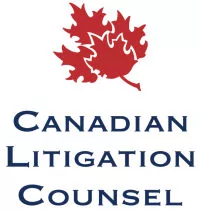- within Litigation and Mediation & Arbitration topic(s)
- with Senior Company Executives, HR and Inhouse Counsel
- in European Union
- with readers working within the Oil & Gas, Property and Law Firm industries
Karenjit Aujla was involved in two separate motor-vehicle accidents in June 2015 and January 2016. She went to trial and was awarded damages in relation to these accidents - the decision inAujla v Nijjar 2022 BCSC 1262 , which is the subject of this appeal. In particular, Ms. Aujla appealed on the basis that the trial judge erred in law, in analyzing whether there was a causal link between the second accident and her knee injuries. The Court of Appeal ultimately ruled in favour of Ms. Aujla and ordered a new trial.
The Decision
The trial judge concluded that the only theory submitted by Ms. Aujla respecting her knee injuries was that they were injured upon hitting the dashboard as she sat passenger in her friend's car, in her second accident. Although the trial judge declined to find this as a fact, citing reliability concerns with the evidence on this point. The Court of Appeal, however, found that Ms. Aujla's counsel made extensive submissions as to an alternate theory, in fact. They submitted that Ms. Aujla injured her knees in the course of carrying out treatment for all of her accident injuries. Indeed, there was some limited evidence offered on this point at trial.
Notably, the Court of Appeal found that the trial judge did not perform the necessary causation analysis under Athey v Leonati, [1996] 3 SCR 458. They failed to consider the principle at para 49 of Athey, wherein the SCC held that "once it is proven that the defendant's negligence was a cause of the injury, there is no reduction of the award to reflect existence of non-tortious background causes." In Ms. Aujla's case, she cited a number of decisions in which plaintiffs sustained further injuries following their respective motor-vehicle accidents. The further injuries in those cases involved non-tortious causes (such as workplace injuries), and the court properly considered Athey in respect to the circumstances of each case. Further, Ms. Aujla retained an orthopaedic surgeon as an expert on her behalf, Dr. Vaisler, who provided an opinion that lent credibility to her alternate theory. The Court of Appeal said, at para 92:
"With respect to the alternate theory of causation for Ms. Aujla's knee injuries, the Trial Reasons do not set out findings of fact regarding whether Ms. Aujla's rehabilitative exercise program caused or materially contributed to these injuries. As well, missing are any findings with respect to the opinion of Dr. Vaisler that these injuries were probably due to overuse associated with her exercise program and that it was possible that she was at risk for developing these injuries because of quadriceps muscle weakness following the accidents. It is unclear whether the trial judge rejected this opinion, in whole or in part, in concluding that Ms. Aujla's knee injuries were not causally linked to the second accidents. In general, a trial judge is best suited to determine the admissibility of and weight to be given to an expert report."
The Court of Appeal further noted that a finding on this issue would trigger a cascading effect. It would be determinative to the proper assessment of non-pecuniary damages, costs of future care, special damages, as well as loss of housekeeping capacity, among other heads of damage.
Key Takeaway
It is certainly possible that a plaintiff will meet the evidentiary burden of proving that they sustained further injuries, subsequent to their accident injuries. This could occur during active rehabilitation with their kinesiologist or some treatment with another medical professional, such as a physiotherapist. Where these circumstances exist, it may be worthwhile to consider adding the medical professional into the litigation as a third-party. This is especially so if there is expert evidence available which corroborates such a theory. If nothing else, this also has the potential of providing further impetus for settlement of a claim, where a plaintiff now must necessarily evaluate their relationship with their treating medical professional(s).
* * *
Brownlee LLP is a member of the Canadian Litigation Counsel, a nationwide affiliation of independent law firms .
The content of this article is intended to provide a general guide to the subject matter. Specialist advice should be sought about your specific circumstances.


